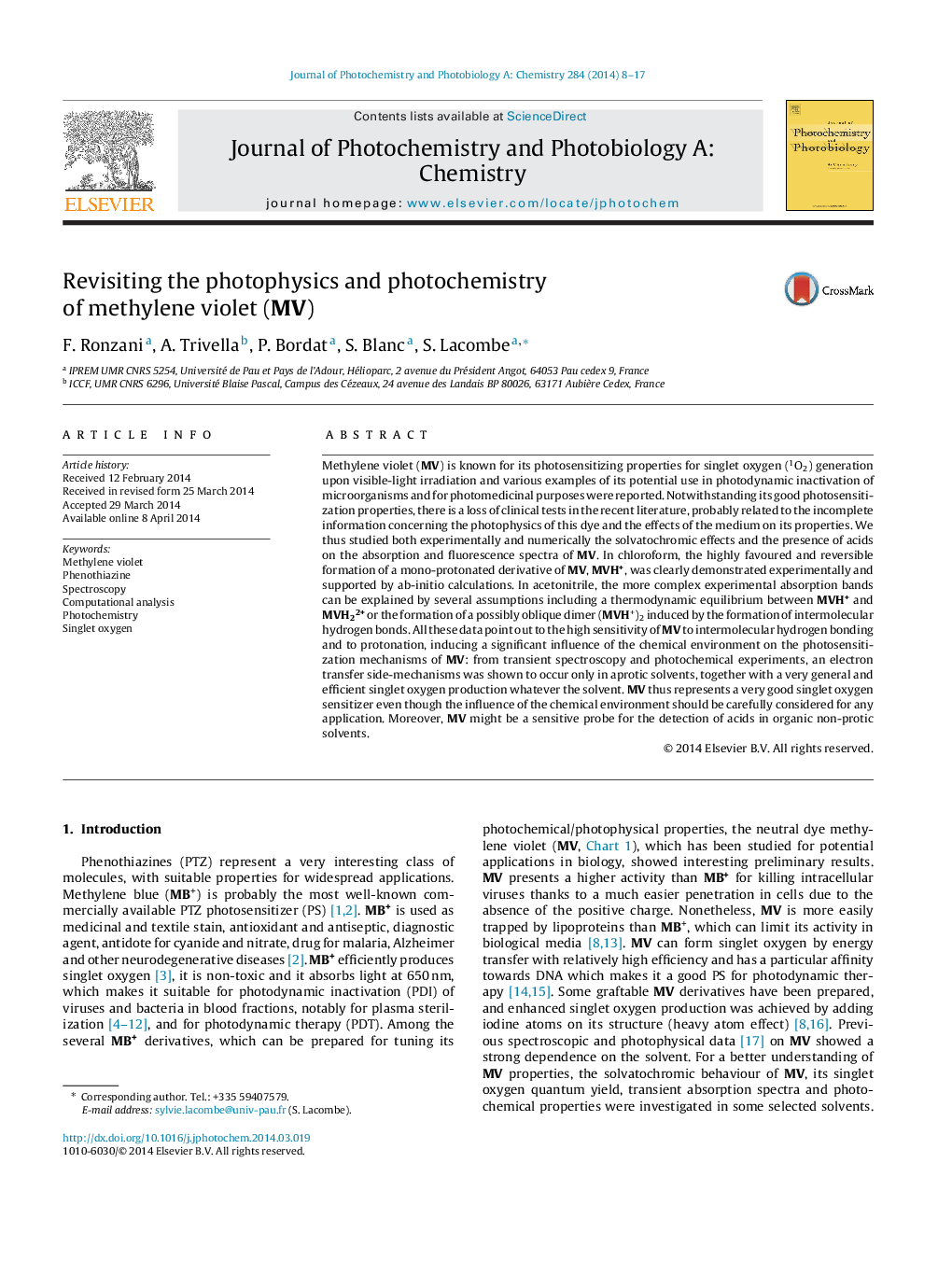| Article ID | Journal | Published Year | Pages | File Type |
|---|---|---|---|---|
| 25943 | Journal of Photochemistry and Photobiology A: Chemistry | 2014 | 10 Pages |
•Photochemistry and reactivity of MV in various solvents.•Computational support for understanding the photophysical properties.•Solvatochromism and reactivity strongly influenced by H-bonding and protonation.
Methylene violet (MV) is known for its photosensitizing properties for singlet oxygen (1O2) generation upon visible-light irradiation and various examples of its potential use in photodynamic inactivation of microorganisms and for photomedicinal purposes were reported. Notwithstanding its good photosensitization properties, there is a loss of clinical tests in the recent literature, probably related to the incomplete information concerning the photophysics of this dye and the effects of the medium on its properties. We thus studied both experimentally and numerically the solvatochromic effects and the presence of acids on the absorption and fluorescence spectra of MV. In chloroform, the highly favoured and reversible formation of a mono-protonated derivative of MV, MVH+, was clearly demonstrated experimentally and supported by ab-initio calculations. In acetonitrile, the more complex experimental absorption bands can be explained by several assumptions including a thermodynamic equilibrium between MVH+ and MVH22+ or the formation of a possibly oblique dimer (MVH+)2 induced by the formation of intermolecular hydrogen bonds. All these data point out to the high sensitivity of MV to intermolecular hydrogen bonding and to protonation, inducing a significant influence of the chemical environment on the photosensitization mechanisms of MV: from transient spectroscopy and photochemical experiments, an electron transfer side-mechanisms was shown to occur only in aprotic solvents, together with a very general and efficient singlet oxygen production whatever the solvent. MV thus represents a very good singlet oxygen sensitizer even though the influence of the chemical environment should be carefully considered for any application. Moreover, MV might be a sensitive probe for the detection of acids in organic non-protic solvents.
Graphical abstractFigure optionsDownload full-size imageDownload as PowerPoint slide
